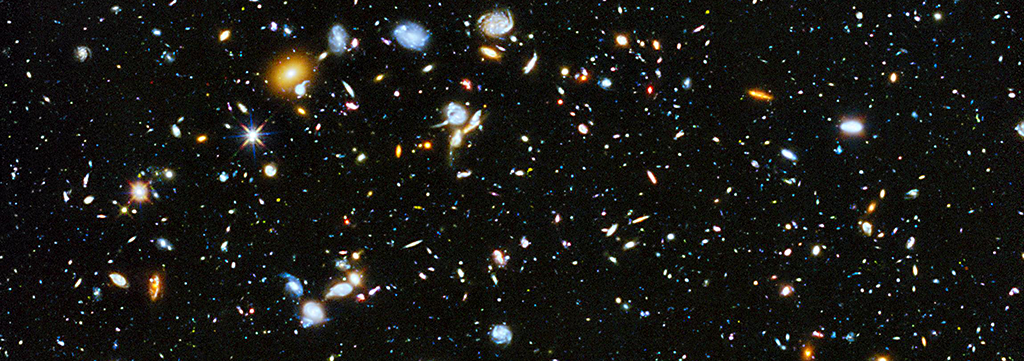Night sky has fascinated humankind ever since its emergence from evolution. The advancements in technologies over time has only inspiredus to dive deep into Space.
Objects which emit a bluer light are generally hotterthan objects emitting a primarily redder light. For example a star which has a surface temperature of 30,000 K appears blue, while a star that has a surface temperature of only about 3,500 K appears red to the human eye. Our sun is a yellow star with a surface temperature of about 5600 K. Thus colors can provide us an insight into the emitting object. But in general, astronomicalobjects like stars emit light in a range of wavelengths, called the Electromagnetic (EM) spectrum, including a visible region (comprising colors from red to blue) where human eyes are sensitive to and non-visible wavelengths, namely Radio, Infrared, Ultraviolet, X ray, Gamma ray wavelengths.
Astronomers use telescopes to observe the celestial objects and measurethe flux by collecting the light emitted through different filters, called photometry or imaging. Traditionally magnitudes are used to quantify object brightnesses since Ptolemy in the second century AD. Also their colors are given in magnitudes corresponding to the ratios of the fluxes in logarithmic scale.
SDSS observes the sky through five different color filters, meaning in five different color bands. There are two filters green (g), red (r) falling in the visible region of the EM spectrum, and other three filters correspond to light invisible to human eyes: ultraviolet (u), and two infrared wavelengths (i and z), and colors are for example: u-g, g-r, r-i, and so on. A star’s color can give clues to an important property of a star: its average temperature. For deriving the same, astronomers use a “color-color diagram”. Color-color diagrams are generally plotted between two colors for one or many sources.
Another way of studying astronomical objects is spectroscopy. Instead of measuring the integrated light over a wide range of wavelength bands as in photometry, here the radiation from stars, galaxies etc are passed through a dispersion medium – for instance a prism – in order to measure light as a function of wavelengths. Spectra can provide us valuable and comparatively accurate insight into the properties of emitting sources like temperatures, elemental abundances, emission mechanisms etc.

Astronomers easily measure several dozens of parameters for each object that they detect in imaging. If they obtain spectra, this number can quickly grow by a several factors. Objects, be it galaxies, stars, or active galactic nuclei for instance, therefore occupy a very large dimensional parameter space. By studying how certain types of objects are distributed in this space, a lot about their nature and their formation history can be learned. Just as an example, take a look at the image from the Hubble Deep Field above. Any trained astronomer will be able to tell that the yellowish, larger and round somewhat fuzzy looking galaxies are so called elliptical galaxies, which are relatively old, have likely emerged from violent merging event of several galaxies that have thrown their comprising stars on random orbits (hence the roundish fuzziness fuzzyness). They also have largely stopped forming stars. Blue and spiral shaped galaxies on the other hand are still actively forming stars and had a rather unspectacular formation history. Very small appearing and very red objects are likely high-redshift galaxies, which emitted the now observed light not very long after the big bang. Interesting science begins where new types of objects can be found that occupy unusual places in the parameter spaces. Discovering them however is not easy and requires experience and to some degree luck, but importantly also the right sets of tools to navigate easily and intuitively through large datasets.
This is exactly what INDOE tries to achieve. Scientists will for instance be able to give a set of example galaxies which look interesting. Tools developed in IDONE INODE can then automatically and intelligently suggest larger samples of similar looking galaxies. The scientists can then increase, refine or reshape the parameter ranges of interest to arrive at a final set of objects that are of interest to their particular science. Importantly, since science queries can be given in natural language, this is not limited to the absolute experts in their fields anymore. Even amatuer astronomers or simply enthusiastic individuals will be able to navigate intuitively through a vast discovery space.